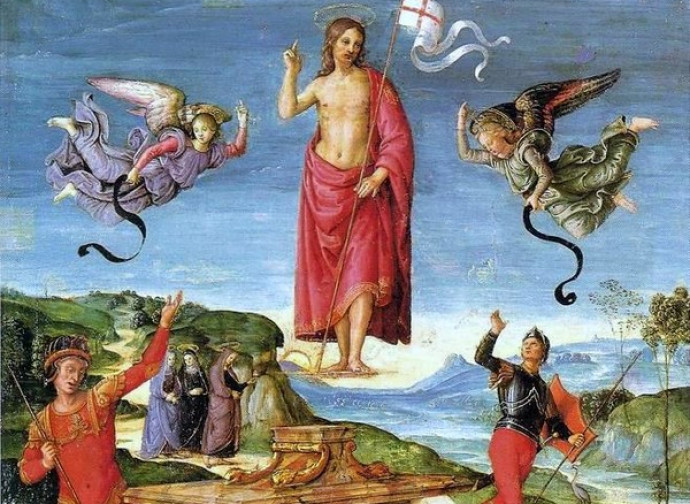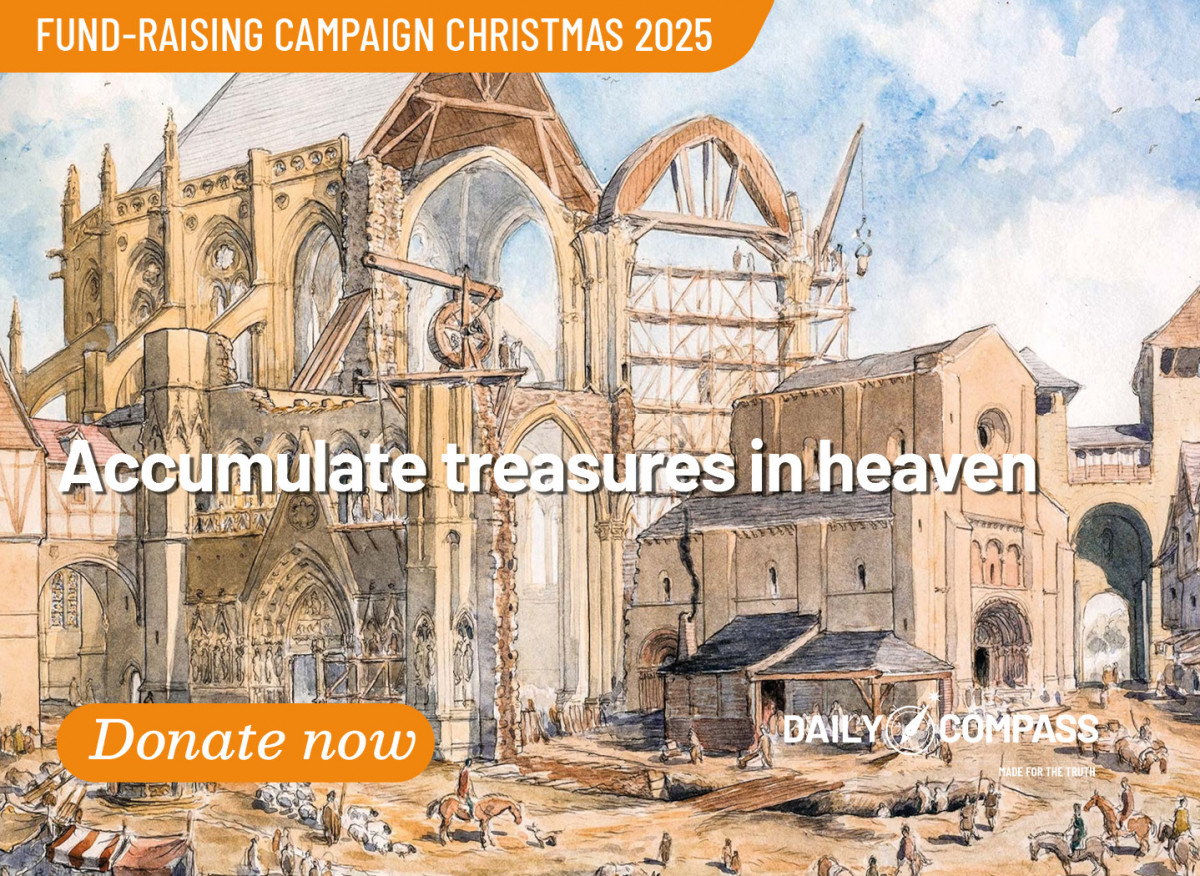Common Easter Problem: Rome Ruminates, World Council of Churches finds Solution
The Vatican is pushing to resolve the question of a common date for Easter to unite Christian and Orthodox Churches. The simplest solution is for the Orthodox to adopt the Gregorian calendar, which is scientifically accurate. But there is a possible alternative, outlined in a document from the World Council of Churches.

The International Theological Commission (ITC) issued a document April 3, marking the significance of this year’s 1,700th anniversary of the Council of Nicaea. That ecumenical Council, which met in AD 325, tackled important Christological and Trinitarian controversies. It also set the formula for how to calculate the date of Easter.
Pope Francis's Vatican is aggressively pushing this "common Easter" question. It finds itself mentioned, for example, even in the final document of the Synod on Synodality (no. 139). That's bizarre, given that the document was supposed to reflect contemporary concerns in the Church. The COVID pandemic that shuttered churches in some places for a year gets no mention in it, but the quest for a "common Easter," whose primary advocates seem to be a small professional ecumenical establishment, does?
As an historical aside: at the time of Nicaea, the Church was riven by a controversy over how to set the date of Easter which, in part, was affected by the relationship between the Church and Judaism. The “Quartodecimans” wanted Easter to coincide with Passover, which meant Easter could fall on any day of the week. Their opponents – and the Church’s final solution – recognized that the Church’s greatest liturgical feast should remain connected to Sunday, the Lord’s Day, the day of the Resurrection on the first Easter. They therefore set the date of Easter to fall on the first Sunday after the first full moon of spring, i.e., in some proximity to Passover – which is set by the Hebrew lunar calendar – but on the Lord’s Day).
Over time, how East and West set Easter came to diverge. Part of the reason was that some parts of the East insisted that Easter occur after the multi-day Passover was completely over. But the far greater factor, in my judgment, for the disparity is the East clinging liturgically to the Julian Calendar, a calendar grossly disconnected from astronomical reality.
The calendar marks astronomical events. Spring is above all an astronomical, not a calendrical event. Spring is that day when day and night are of equal length, after which day increases and night decreases, i.e., usually around March 21 in the northern hemisphere.
But when one’s calendar is out-of-astronomical synch by 13 days (the current disparity between the Gregorian and Julian Calendars), Gregorian March 21 is Julian March 8, i.e., late winter. If you define “spring” for Easter purposes according to a calendar rather than astronomical truths, you are in trouble.
Because Easter is so late this year, it falls in East and West on the same day: April 20. Pope Francis and Patriarch Bartholomew of Constantinople (Istanbul) see that as a sign to work together towards future common Easters as testimony to the unity that should bind Christians together.
I agree that unity is a laudable goal. I believe Christians should share a common Easter.
Catholics and almost all Protestants already do, because Protestants long ago adopted the Gregorian Calendar. Most Orthodox countries did not do so until the early 20th century and then only civilly. Autocephalous Orthodox churches (Orthodox churches are largely governed according to national boundaries) were divided over adopting that calendar for liturgical purposes. Some did, others did not – including the by-far largest autocephalous Orthodox Church, the Russian. And there is no hint Moscow is thinking differently.
The ITC document devotes some limited attention to the Easter problem. Its “limited” treatment is appropriate, because Nicaea’s greatest achievements were Christological and Trinitarian (and, from what we see in Catholic Germany, those questions seem to be generating backsliding among that country’s faithful: see here).
The ITC acknowledges the desire to find a common date for Easter, noting (somewhat imprecisely) that “Vatican Council had no objections to the introduction of a new calendar” (no. 45) to achieve that purpose.
Well, not exactly. The long-dormant “Appendix” to the Constitution on the Sacred Liturgy actually says two things the ITC appears to have conflated. One was that the Church was open, "with the assent of those concerned, especially the brethren separated from communion with the Apostolic See" to setting a common Sunday for Easter. The other was the idea of a “perpetual calendar,” which has nothing to do with Easter and everything to do with overcoming the fact that days and dates shift, e.g., Friday, April 4, 2025 will be Saturday, April 4 next year.
The perpetual calendar has little to do directly with Easter but carries a Trojan Horse: in order to have a calendar where April 4 will always be a Wednesday means you will have some days that fall outside the seven-day week and that Vatican II absolutely rejected. (You will have days outside the seven-day cycle because neither 365 nor 366 is evenly divisible by seven). It’s a Trojan Horse because it is a secularization vehicle to abolish the seven day week crowned by the Lord’s Day. That's a whole other problem we should not breach to produce a "Nicaea deliverable."
Vatican II proposed addressing the broad movability of Easter by narrowing its range, e.g., pegging it to the second or third Sundays of April. Easter remains moveable, but more limitedly. But that doesn’t address your problem, because the “second Sunday of April” is a calendrical, not an astronomical fact. You come back to the original problem: what calendar are you using? And, if the East can swallow a calendar adaptation here, why not just adopt the scientifically accurate Gregorian Calendar? Working off the same calendar, one would not have to abandon the time-honored Nicene formula of “Easter is the Sunday after the first full moon of spring” to force both East and West into a wholly novel “solution” (an arbitrary April weekend) that disconnects Easter from Passover, something the ITC cautions against (no. 45). (On that problem, see here).
In other words, let’s ask the embarrassing question: in the name of ecumenical unity, why can’t the Orthodox accept a calendar grounded in reason as well as faith? And, if the argument from some Orthodox must be not only that Passover and Easter be related but that Passover must be completely over, let’s discuss the ITC’s distinction to what degree “anti-Jewish justifications” (no. 46 and note 62) and whose (Council or Emperor?) affected (and could, therefore, be dissociable from) Nicaea’s discipline?
Or, perhaps a solution might come from the World Council of Churches (WCC)?
The WCC’s 2025 Faith and Order Paper, “Towards a Common Date for Easter,” surveys the positions of various Christian denominations on the question and offers a range of solutions. There was one I found particularly attractive because I think it solves the calendrical problem without tampering with the Nicene formula for pegging Easter to spring and Passover.
The WCC proposes that all Christians take the astronomical fact of when the spring equinox occurs in Jerusalem as the time they all acknowledge “spring has sprung.” Working from that fact, the first full moon thereafter is also an astronomical fact, while East and West both acknowledge what day is Sunday (the Julian Calendar is off by dates, not by days). In that way, astronomical fact at the place of Jesus’s Resurrection would bind all Christians to acknowledge when spring began and the first full moon occurred, so they would come to the same Sunday.
This idea is not far-fetched. Even at Nicaea, the Council Fathers needed to know when spring occurred and deferred to the knowledge of the Alexandrian astronomers for their scientific knowledge. Why not use this to overcome the calendrical problem (without forcing the Orthodox – especially the Russian Orthodox – into admitting they cling to a flawed calendar)?
I myself would prefer to force the calendar issue, for the simple reason that, without it, East and West remain divided. Using the Jerusalem astronomical formula might be a different way to getting to a common Easter using the same norms Nicaea did, but it will not solve the problem that East and West continue to mark Christmas 13 days apart. Because Christmas is fixed, i.e., December 25, correcting the calendar is the only way to resolve that disparity.
But for those willing to have half an ecumenical loaf with which to break bread, the Jerusalem calculation (rather than the arbitrary pegging of Easter to some “April Sunday,” whatever that means) best achieves the goal without sacrificing our common Nicene tradition for fixing the feast.
Easter Triduum, the mysteries of life and death interrogate world today
In the three days of the Triduum we relive the apocalyptic clash between life and death, light and darkness, hate and love. It is an ever-present drama that concerns each of us, our eternal destiny. Even in the greatest suffering, Christ gives us the certainty that, united with Him, we will rise to new life.
Easter, the most amazing news of all
We do not follow Jesus because we like the Cross, or because we enjoy suffering. We do not do so simply out of self-abnegation or desire to obey the Commandments, but rather because Christ gives us what no publicity can. Only Christ Jesus keeps His promises: He saves, gives new life, completely purifies us of our sins, and provides a sense to the suffering of illness and death, because He has raised us to Eternal Life.


